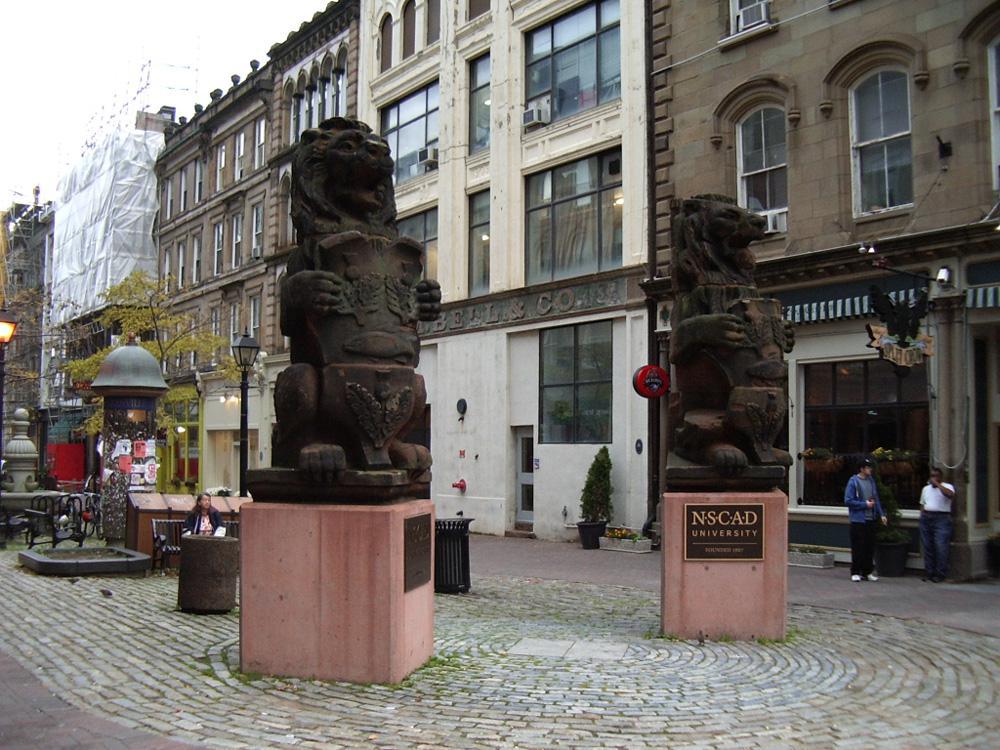Following years of financial difficulties and speculation about whether NSCAD University would seek to affiliate with another, larger Halifax-area university to solve some of its money problems, things are looking up for the institution.
On July 9, philanthropists Margaret and David Fountain gave $3 million to NSCAD University, one of the largest gifts in the school’s 127-year history. (Margaret Fountain has been on NSCAD’s board of governors for 14 years, while David Fountain is president of Longwood Investments, a privately held investment firm.)
Then, a few days later, NSCAD’s board of governors affirmed—following consideration of an 18-month study into possible affiliations with Dalhousie University and Saint Mary’s University—that the best course of action for NSCAD is to remain autonomous.
“The study found no evidence that there would be any short-, medium-, or long-term cost savings associated with affiliation,” NSCAD president Daniel O’Brien tells Canadian Art. “Nor could they find any basis for believing that program collaborations and research collaborations can only happen in the context of affiliation.”
As a result, the study and the board of governors’ decision puts to rest concerns raised by a former provincial government, which believed that affiliation would be a solution to the historic college’s challenges.
Another rationale for remaining independent is that NSCAD’s deficit and debt have been slowly declining. As the Halifax Chronicle-Herald notes, at its crisis stage a few years ago, NSCAD’s operating deficit peaked at about $2.5 million and debt at about $18 million. The newspaper reports that has since decreased to $500,000 in deficit and $13 million in debt.
“This is a reminder to institutions, and particularly universities, that they have the ability to plot their own course,” says O’Brien, who has spent his career—and much of his retirement—in leadership roles at various universities. “It’s their choice to either demonstrate that they are able to self-manage, or run the risk of being assigned a different status.”
For Canadian art colleges specifically, there is also a potential lesson at hand.
“From the outset, I would say that the sentiment of our community, students, faculty, alumni and supporters always preferred an independent status, similar to the other three art and design universities in Canada,” O’Brien says. “There’s a belief that in order to conduct our affairs as we wish, we need to have a degree of separation from mainstream universities.”
Indeed, the study found that “as a smaller, niche institution, focused on art education and design, NSCAD’s operations are different from and not duplicative of other institutions.”
Yet not having an art background can also be an advantage in leading such schools through crisis. “When I first came here [in 2012], I thought it was a real handicap not having a background in art and design,” O’Brien says. “But I’m thinking it was helpful to have that orientation, because I could approach anything with an open mind, looking at the entire organization, rather than specific areas of art expression.”
Looking forward, O’Brien—who is moving on himself to the Atlantic School of Theology—says the future bodes well for NSCAD. Recent events have given the school a confidence boost—and “it’s no secret that when you are under the microscope, the confidence begins to erode.”
Also, NSCAD has forged joint programs with Nova Scotia Community College and the University of King’s College and there are other initiatives in the works. The school has shown that its community can pull together to endure “tough pills” through “collective effort.” And NSCAD’s new president, Dianne Taylor-Gearing, is due to begin August 4.
“We are hoping that NSCAD will have a bright future,” O’Brien says.

 Part of the NSCAD campus at Granville and Duke Streets. Photo: Griva via Wikimedia.
Part of the NSCAD campus at Granville and Duke Streets. Photo: Griva via Wikimedia.







